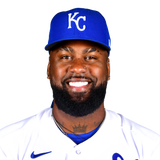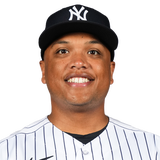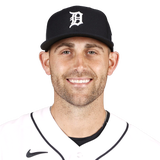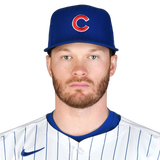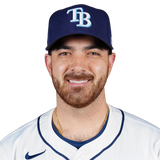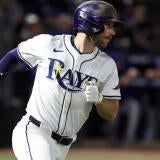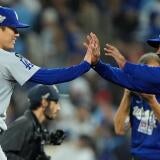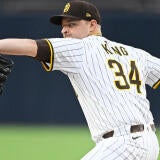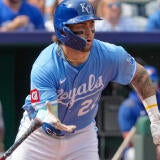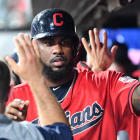| ||||||||||||
2020 Fantasy Baseball Breakouts: Five more ready for stardom
Landing the right breakout can take your team to the next level. Here are Frank Stampfl's five favorite breakout picks for 2020.
The Fantasy industry, both analysts and managers alike, have become so incredibly sharp over the years. It seems almost impossible to discuss a sleeper, breakout or bust candidate who people aren't aware of at this point in the offseason. I believe the question we should be asking is, "What defines a sleeper, breakout or bust"? Life is all about perspective, after all. I'll try my best to explain how I view the three at this point in time.
For me, breakouts might come with a certain level pedigree or have had expectations at some point. These are players that can vastly outperform their value. Rafael Devers is a perfect example of a breakout from 2019. When all was said and done, he was likely a 10th-round pick last year. This season he's being drafted as a consensus top-36 player.
Baseball is a complex sport that requires a bevy of variables coming together at the right time. When that happens, we wind up with 2019 Devers. Let's find 2020 Devers, shall we?
Breakouts
Franmil Reyes is one of those Statcast heroes like Aaron Judge, Nelson Cruz and Miguel Sano, except he goes last of that bunch. His 93.3 MPH average exit velocity ranked fourth in MLB last season. If we take a step further, his 46.2% hard contact rate ranks 15th among all hitters with 750 plate appearances since the start of the 2018 season.
To be frank, he destroys baseballs for a living. While the batting average dipped in 2019, he wound up hitting 37 home runs with 81 RBI. I'd expect with a full offseason in the American League, he'll be more comfortable when the season starts up and can build off what we've seen from him thus far.
One issue is that he still hits too many ground balls for a slugger, but that is trending in the right direction. From 2018 to 2019, Reyes lowered his ground ball rate five percent and raised his average launch angle 2.7 degrees. If that trend continues with how hard Reyes hits the ball, we could see a HR/PA rate that ranks among the elite in baseball. His .264 expected batting average, according to Statcast, also tells us we should expect positive regression in that department. It would not surprise me if Reyes provides similar power as guys like Pete Alonso or Aaron Judge who go well ahead of him in drafts.
| ||||||||||||
We all have those players we cannot quit no matter how hard we try. What's crazy about Willie Calhoun being that player for me is he hasn't even been around that long! With that being said, I've either drafted him or added him off waivers every season he's been in the bigs. I can't quit. It's extremely unfortunate that Calhoun suffered a broken jaw after being hit by a 95-MPH fastball this spring, but with the season delayed, it seems like Calhoun should be ready whenever we start things back up.
In just 83 games last season, Calhoun hit 21 home runs with 48 RBI. Over a 162-game pace, that's 40 home runs and 93 RBI. Calhoun mixes an interesting blend of contact while lifting the ball. Usually, most sluggers who are trying to lift the ball wind up selling out for power, striking out a ton and are a liability on your batting average. In 482 career plate appearances with the Rangers, Calhoun owns a 17.4% strikeout rate. In his minor-league career, he has never struck out more than 15.9% at any level. Speaking of what Calhoun has done in the minors, I keep clutching that 2017 season. In 128 games at Triple-A in 2017, Calhoun hit 31 home runs while batting .300 with a .927 OPS. For the first time in his career, Calhoun isn't looking over his shoulder when it comes to playing time. He's the Rangers' starting left fielder and will remind everybody of why he was acquired in the Yu Darvish trade a few years ago.
| ||||||||||
On the surface, Matthew Boyd's 4.56 ERA and 1.23 WHIP in 2019 were a disappointment, but let's take a look under the hood. His 3.88 xFIP and 3.61 SIERA tell us he was a bit unlucky last season, specifically in the home run department. His HR/FB rate was 20% in the second half last season and, coupled with an increase in walks, was a recipe for disaster. There's no doubting his swing-and-miss stuff was elite in 2019, evidenced by his 14.1% swinging strike. That mark ranked eighth among qualified starting pitchers, while his 238 strikeouts were tied for 10th with Patrick Corbin.
In fact, Boyd stood out in multiple underlying analytics I use when evaluating starting pitchers. There were eight qualified SPs last season who posted at least 34% chase rate, 64% first-pitch strike percentage and 12% swinging-strike rate (basically top 20 in each category): Gerrit Cole, Jacob deGrom, Justin Verlander, Max Scherzer, Shane Bieber, Clayton Kershaw, Joe Musgrove and Matthew Boyd. Now you might be asking why I use that combination of skills, and it's a fair question. Those three specific tools tell me which starting pitchers get ahead in the count early, induce swings and misses and get batters to chase pitches outside the strike zone. As you can see, Boyd is in great company (you'll soon learn my love for Joe Musgrove, too). Boyd looked lights out this spring, and there were even reports of increased fastball velocity and an improved curveball to accompany his wipeout slider. Boyd is likely undervalued because he pitches for the Tigers, too.
| ||||||||||||
These next two are longer shots at breaking out and players you should target as late-round fliers or in deeper leagues, but I still believe they can vastly outperform their ADP in 2020. It wasn't so long ago that Ian Happ was a sought-after commodity in Fantasy Baseball. One might consider him a post-hype breakout at this point. Back in 2017, Happ hit 24 home runs with eight stolen bases in just 115 games, albeit with a 31.2% strikeout rate. In 2018, the strikeouts just became too much for Happ to handle as his strikeout rate ballooned to 36.1%. In 2019, however, Happ reminded us of his upside, posting an .898 OPS in 58 games with the Cubs. It all comes down to strikeouts.
Happ took a huge step forward last season in terms of making contact. In the minors he struck out just 26.3% of the time and then followed that up with a career-best 25% strikeout rate in the majors. It seems like Happ has been around forever but he's still just 25 years old. During his brief MLB career, he's shown the ability to consistently barrel up the ball, sporting a 12.9% barrel rate. To put that in perspective, Cody Bellinger owned a 13% barrel rate last season, which ranked 18th in all of baseball. According to Statcast, Happ makes above average contact when he makes contact, which is the biggest key for him. Happ is projected to be the starting center fielder heading into the season and has the upside to finish as a top 30 Fantasy outfielder.
| ||||||||||
Much like Happ, Aaron Civale is somebody you can get dirt cheap in Fantasy drafts right now, and I think you should take advantage. At first glance his 2.34 ERA and 1.04 WHIP last season might be misleading because of a 4.61 xFIP and 4.74 SIERA, but he's been way too great in the minors for that to push me away. In 74 career minor-league starts, Civale owns a 3.12 ERA with a 1.10 WHIP across 381.1 innings pitched. While he is not a strikeout specialist, I see a lot of Mike Soroka in Civale's game.
Civale thrives off having stellar command, never posting a BB/9 above 1.91 at any level in the minors. While his 8.8% swinging strike rate in 10 starts with the Indians last season was below league average, he's consistently been better than that at every level of the minors. In fact, he posted a 13.1% swinging strike rate in eight starts at Triple-A and a 12.3% rate at Double-A last season. Civale has an advanced arsenal that features five different pitches, including four that he uses at least 11% of the time. Again, I think Civale has Soroka-type upside in 2020, which means he can make his way into the top 25 starting pitchers if everything comes together for him.


